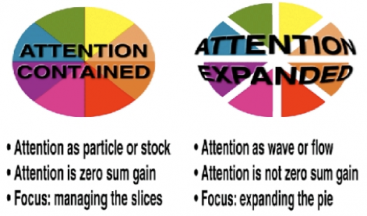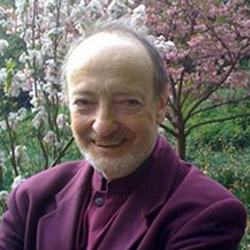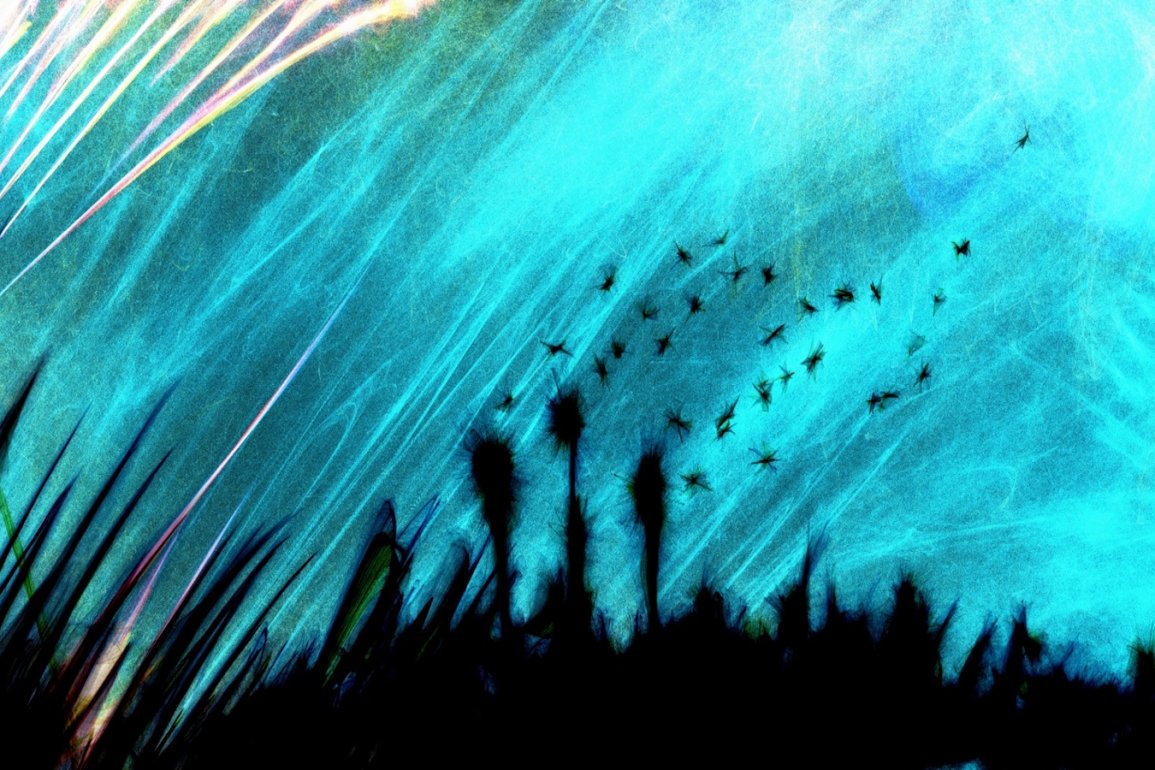By George Pór for Enlivening Edge Magazine
Learning to live more comfortably with complexity in your life
Overwhelmed?
I know some people who never get infoxication or infobesity (terms describing the state of being overwhelmed by too much information), never have the “too many things to do in too little time” symptom, and never get exhausted by the end of the day, in spite of accomplishing great, and a great many, things. I aspire to be one of them. Don’t you?
I am co-hosting an online community of practice for budding Teal mentors, where members reported such challenges as:
- “I am certainly being challenged by time at the moment with a touch of FOMO [fear of missing out] and a splash of exhaustion. Time constraints and of course the need to earn a living always mean that I’m becoming a juggler. Anyone with tips on how to keep all the balls in sync, I’d be grateful for at the moment.”
- “It is hard to prioritize our time and energy into a few projects, as many things we want to do all at once! I would like to know more about how all of you can choose certain things and leave others out. Hope we can collectively develop wise tips to save all people who are working in the social change world. :-)”
Of course, I strongly resonate with them because I’ve been experiencing the “not having enough time for all I want to do” syndrome too frequently, and even more so since I’m working on the edge of possibilities for reinventing organizations.
For many years, I thought that it’s just a question of smart time management, and that better tools and methods will help me defeat the clock. I have made some progress, sure; I stress myself less and accomplish more, but the perceived lack of sufficient time still feels like a vexing constraint.
 Are you feeling sometimes scattered, fragmented like this image? I thought a good electronic to-do list integrated with my calendar and email would save me from drowning in the ocean of Post-It notes of self-reminders covering the desktop and the doors in my office. Now I have all those tools, and I feel I’m getting there, but no matter how rapidly I can check off things done, new requests and opportunities-not-to-miss are coming in ever-faster. No matter what tools I use, unfortunately, they don’t double the number of hours in the day from 24 to 48.
Are you feeling sometimes scattered, fragmented like this image? I thought a good electronic to-do list integrated with my calendar and email would save me from drowning in the ocean of Post-It notes of self-reminders covering the desktop and the doors in my office. Now I have all those tools, and I feel I’m getting there, but no matter how rapidly I can check off things done, new requests and opportunities-not-to-miss are coming in ever-faster. No matter what tools I use, unfortunately, they don’t double the number of hours in the day from 24 to 48.
I felt a little bit liberated when I realized the conundrum I am facing is not a natural disaster; it’s man-made: I created it. At least that realization helped shift my attention from the “being a victim of my circumstances” mindset to the question of how I am creating those frequent time crunches. Here are some factors I could identify.
When a new request or opportunity for high-impact engagement is made to me, I can listen to it with full awareness of my total portfolio of projects and present priorities, or not. If I do, then any new demand/opportunity that is not aligned with them tends to fall off. Of course, some especially enticing opportunities always find their way to sneak into my map, even if they don’t relate with present projects.
Another way I’ve been creating the time crunch conundrum is by trying to remember all I’m supposed to do, even when the number of those items is way too high to keep it in my memory. I found clustering my “action reminder” Post-It notes into projects or directions in my Circle of LifeWork somewhat useful, but far from a satisfactory solution.
(There are also many ways in which our inadequate “attention management” practices come back to bite us. How to replace those habits of attention hygiene which don’t serve us anymore might be the subject of another article or part of what I will teach to interested change leaders and facilitators.)
What I really needed was seamlessly connecting my email with my project map, and both of them with my calendar. Having set up my project/task management workflow, using that kind of integration across the corresponding apps, I now can send action request/opportunities into the appropriate “project” channel of my Todoist app that synchs across my laptop, iPad and iPhone. That way, I can update my task list, for example, at the airport, or in the waiting room of a dentist office.
Having optimized my tool environment, now I am up for the deeper learning about living more comfortably with complexity in my life.
A frictionless integration of project-and-task management with email and calendar is only half the solution. However, it is already a small victory in the battle for liberating our attention for where it can best serve our higher purpose. I’m talking about the deep dive of learning to thrive on complexity and Tealing with our sense of being overwhelmed by information or calendar challenges.
Just Teal with It
The solutions of dealing with the cognitive complexity of absorbing the incessant waves of information tsunami, and dealing with the existential complexity of prioritizing zillions of tasks on our personal/professional agenda, have one common core ingredient: we just have to Teal with it.
“Teal” is the color code introduced by Ken Wilber for a new stage of consciousness which is just emerging and is characterized by:
- Understanding of interconnected systems of relationships and processes in any context, including relationships among knowledge fields and competing “next-action” priorities
- Attunement with the big picture of the decisions to make, “which support overall principle, strategy, integrity, and foresight” (An Overview of Developmental Stages of Consciousness, by Barrett C. Brown)
- Being at ease with creating “positive-sum” games
Tealing with the challenges of complexity calls us to:
- Recognize and see through the habitual process by which we paint ourselves into the corner of not having enough time
- Listen to our deepest concerns and highest aspirations and aligning our project/task-prioritization with them
- Stop thinking of time as zero-sum game
Attention, just like time, can be a positive sum game, when they are somehow increased, and an approach is formulated in which the needs of all stakeholders or projects are met.
 So, how can we do that? How can we expand the pie of attention or time, as illustrated by the diagram on the left, which I created for my “attention leadership” research (2001)?
So, how can we do that? How can we expand the pie of attention or time, as illustrated by the diagram on the left, which I created for my “attention leadership” research (2001)?
Here are some of the approaches that work for me.
The first is more an attitude than a specific approach. I think of my attention not as my property, as a commons that I need to steward well for the benefit of all those (people and projects) whom I care for the most, including future generations. That makes me prioritize my engagements optimized for the highest anticipated payoff to them.
Then I make a foreground/background shift by shifting my attention away from the nodes in the network of my projects, and re-focusing it on the links between the nodes, which represent the flow of information and energy across them. I hold a relaxed attention on those links long enough until a pattern of synergy emerges from the flow.
It’s that synergy pattern that makes the pie expand and creates positive sum games.
There’s much more to all this, but I will stop here to not overtax your attention with this column.
There might be many time management tricks that you might find useful, but the inquiry I am most passionate about. and want to get your input to. is what other Teal strategies do you use that work for you?
 Why am I interested in that? Because if you were running your schedule on Teal, instead of letting your schedule run you, then by the end of the day you might feel a mischievous joy, and declare victory as I do just now.
Why am I interested in that? Because if you were running your schedule on Teal, instead of letting your schedule run you, then by the end of the day you might feel a mischievous joy, and declare victory as I do just now.

George Pór is an evolutionary thinker and a strategic learning partner to visionary leaders in business, government, and civil society. He is the originator of Enlivening Edge, and has been publishing the Blog of Collective Intelligence since 2003. A select list of his articles and book chapters on the fields of collective intelligence, organizational and social renewal can be found here. More about George’s work on the enlivening edge of planetary transformation is here.





Brilliant and thanks❤️ The shift in attention makes all the difference for me!
Thank you Terry for tweeting about this article!
Would you consider writing an article for our magazine about sketching out some future scenarios in which the Teal/”next-stage” organizations movement may be reaching a tipping point?
Hello George,
Good topic, in particular when looking around us to see what happens?.
Breaf comments
– there is not excess of information. Just improve our filters…
– yes, the unit is the flow?
– feeling comfortable with the unknown also helps a lot
– mindfulness is a good remedy against anxiety, which feeds our illusion of needed information
– anyhow, we do not need to understand before acting, so why to bother so much about information ???.
Amicalement
A
Great comments and tips … I’m also struggling in this area … what is working for me: avoid todo lists, if it is important it will come back later; yeah I made a map and what I do should be in alignment; limit time on media and what I can’t read today, well, it is OK I don’t read it, never mark something to read in the future (what a big list you get…); be essentialist: before prioritising some task ELIMINATE a lot that are not essential today; and of course considering all of these point: say NO …